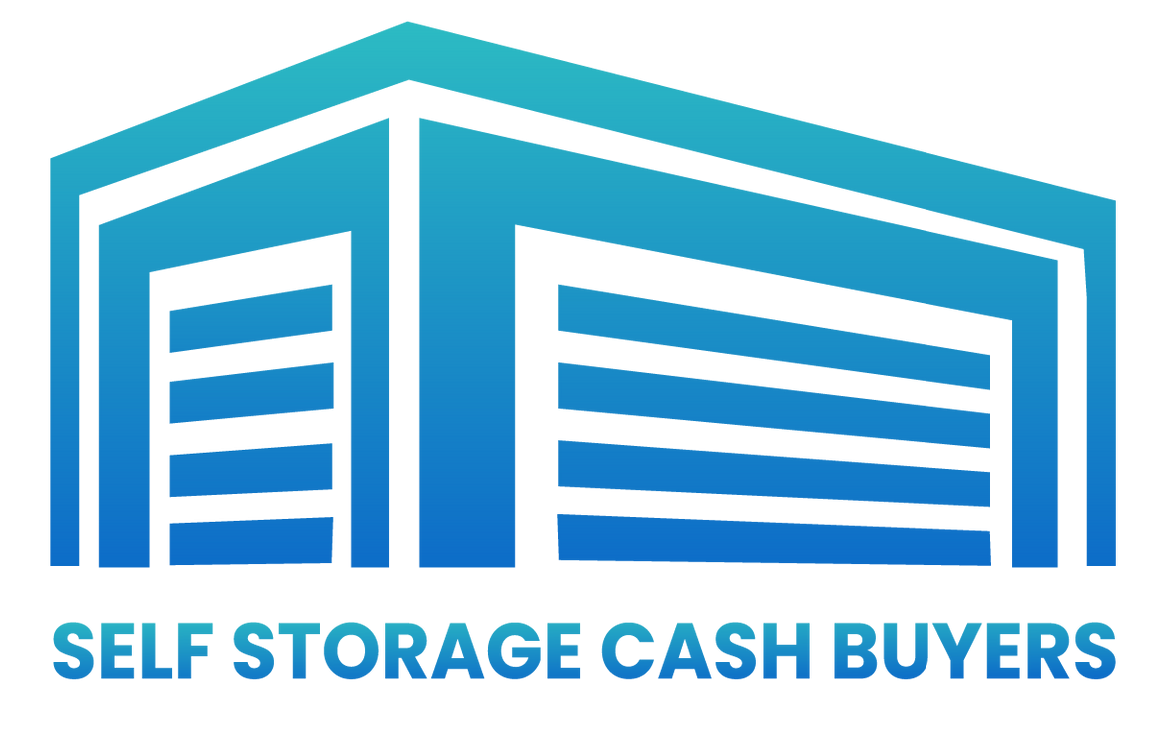Call Us Now:
Self-Storage Industry Statistics for 2023
Published on December 16, 2023
Free Offer Form
We will get back to you as soon as possible.
Please try again later.
Many individuals and businesses nowadays typically have too much stuff and not enough space for it. If you're downsizing, decluttering, or simply storing inventory, a rentable self-storage space is a lifesaver.
This is exactly why, in the past few years, the demand for self-storage increased drastically, with more than a hundred million square feet of U.S. self-storage space alone!
So, whether you're a curious observer, a potential investor, or a business owner looking to harness the potential of self-storage, this article is your guide.
We'll discuss a market overview of the self-storage space industry and discover the numbers that drive it forward.
Importance of Self-Storage Industry
During the planning stages, when business owners strategize for self-storage business, the current impact of having a self-storage unit should be kept in mind.
In this fast-paced consumerist world, a storage space isn't just a place to store your belongings. It also plays a bigger role in the economy.
Here are some key reasons why the self-storage industry is crucial.
Space Optimization
In an era where living spaces are shrinking and urbanization is on the rise, self-storage space is a need. It allows individuals and businesses to store belongings, seasonal items, or existing inventory.
Decluttering and Organizing
A storage unit allows individuals to declutter their homes or offices.
A more organized and functional living or working environment reduces stress and improves overall well-being.
Temporary and Transitional Needs
Many life events, such as moving, renovating, downsizing, or temporarily relocating, require additional self-storage space.
A storage unit safeguards people's possessions during the different phases of life.
Business Support
A storage unit is a cost-effective solution for businesses to store inventory, documents, equipment, and promotional materials.
This way, companies can better adapt to changing conditions and possibly scale their business.
Entrepreneurship Opportunities
Owning and operating a self-storage facility can be a lucrative business venture. You can even become property managers, create jobs, and stimulate local economies.
Investment Potential
A self-storage space is a real estate asset that generates steady income even during economic downturns, attracting real estate investors and more self-storage construction.
Environmental Benefits
As the demand for environmentally responsible services increases, self-storage construction has begun incorporating eco-friendly practices. These include energy-efficient lighting and climate-controlled units.
Self-Storage Industry Statistics
Read this section for a brief overview of the research and statistics in this rapidly expanding industry.
Market Size and Revenue
Over the past 40 years, the self-storage industry has been one of the fastest-growing sectors in the economy.
Even during the 2020 COVID-19 pandemic, the demand for rentable square footage increased due to the transition to remote work.
Market trends from in-demand cities in the U.S. show a $1.16 average rental cost per square foot of self-storage. On a national scale, the average monthly cost of renting a self-storage unit is $108.
Currently, U.S. storage facilities employ over 170,000 people.
With the rise of urbanization and changing consumerism behaviors, industry statistics are poised to see increasing market share and steady business profitability in the future.
The global market size of the self-storage industry is estimated to be worth approximately $58.27 billion in 2023, with the U.S. being the biggest contributor.
Growth Trends and Projections
Experts predict continuous positive growth for the industry. In fact, despite the rising cost of debt, capitalization rates for self-storage remain relatively stable.
These encourage self-storage investing and the construction of more self-storage facilities.
Here's some more information to shed some light on this industry.
- According to trends, the self-storage market will be worth more than $64 billion by 2026.
- As of 2022, the market is expected to have a 5.76% CAGR over the next five years.
- In 2022, over 311,000 people worked in the U.S. public storage and warehousing industry.
- The self-storage industry had a 7% annual employment growth from 2017 to 2022.
- Most storage facilities are incorporating technology into their operations. They now offer virtual tours, online booking, access control through mobile apps, and advanced security features.
- 10'x10' non-climate-controlled units are the most popular unit sizes, along with 5'x5' units.
- However, there's a growing trend towards climate-controlled storage units, which offer specialized storage for sensitive items like electronics, art, and furniture. These tend to have higher street rates.
Key Players and Market Share
The three leading self-storage REITs (Real Estate Investment Trusts) in the U.S. are Public Storage (PSA), Extra Space Storage, Inc. (EXR), and Life Storage, Inc. (LSI).
Public Storage boasts over 170 million square feet of rentable self-storage space; Extra Space Storage previously owned a massive 152.6 million square feet on its own.
After acquiring Life Storage, Inc., as of December of 2022, Extra Space Storage now has 176.1 million total square footage of rentable self-storage space.
Public Storage, Extra Space Storage, and Life Storage collectively dominate a substantial portion of the market, with Public Storage often holding the largest market share. U.S. self-storage REITs on the Dow Jones showed 59.1% year-to-date returns.
Globally, significant players include self-storage companies like U-Haul International Inc., Life Storage Inc., CubeSmart LP, National Storage Affiliates Trust, and Safestore Holdings PLC.
The industry has grown to have more than 1.6 billion square feet of space in 2023. With this, 254.9 million square feet of new storage facilities were built in the last 5 years. This represents 15.5% of the total inventory.
The square footage of this industry is only expected to increase, thanks to new supply and clients.
Self-Storage Industry Demographics
When conducting a self-storage demand study, demographics give valuable insight into the customer base and their usage patterns and behaviors. Let's explore these aspects!
User Demographics
Most self-storage facilities will have the following mix of customers.
Age
Self-storage users span a wide age range. However, millennials and baby boomers are prominent.
Millennials use self-storage during transitional phases like moving or downsizing. Baby boomers, especially military personnel, use it for downsizing or to store belongings during retirement.
Income Levels
Customers from various income levels use self-storage. However, higher-income individuals tend to opt for larger or climate-controlled self-storage spaces.
Residential vs. Business
Residential users include individuals and families looking to store personal belongings.
Business users may include retailers, e-commerce businesses, and contractors needing warehouse space to store inventory, equipment, or documents.
Geographic Location
Urban self-storage properties often have higher demand due to limited space in apartments. Rural areas may see lesser demand.
Usage Patterns and Behavior
You may notice the self-storage inventory change from time to time depending on customer behavior. Let's explore these.
- Short-Term vs. Long-Term - Customers may use storage space for short-term needs, like during a move or renovation. Others opt for long-term storage for items not frequently used.
- Seasonal Storage - A customer may rent a storage unit to store seasonal items like holiday decorations, sporting items, or clothing.
- Decluttering and Downsizing - Many customers store items they wish to keep but don't have room for in their current living or working spaces.
- These items are likely household items, home appliances, and keepsakes.
- Business Inventory Management - Businesses may use a storage unit for inventory management, storing excess stock, promotional materials, and equipment.
- E-commerce businesses, in particular, use self-storage for order fulfillment.
- Security Concerns - Self-storage users expect a storage facility to have robust security measures, such as surveillance cameras, gated access, and individual unit locks.
- Access Patterns - Customers often visit their storage units during weekends or evenings. Extended access hours and convenient locations are important factors in choosing a self-storage facility.
- Online Booking and Payments - Many users prefer the convenience of online booking and payment options.
- Unit Size -The choice of unit size varies based on the volume of items to be stored. That's why most storage facilities usually offer different
unit sizes
to accommodate different needs.
Self-Storage Industry Statistics by Region

Self-storage statistics around the world have distinct trends and dynamics. These provide valuable insights into the global landscape of this rapidly growing sector.
North America
North America, particularly the United States and Canada, is the fastest-growing self-storage market by inventory change. It is the largest and most mature self-storage market in the world.
There are more than 49,000 self-storage facilities in the United States, across both suburban and urban areas. On average, Urban areas have 566 self-storage units per facility, while rural facilities have around 280 self-storage units.
U.S. self-storage renters are a mix of businesses and individuals. There are almost 10% of households renting a self-storage space. As the demand increases, so does the cost per square foot.
In the U.S., the average rental cost per square foot currently sits at $1.16.
73% of U.S. self-storage companies are owned by small operators, 18% by public companies and storage REITs, and the remaining 9% by the top 100 operators.
Europe
In Europe, the United Kingdom, Germany, and France are the top storage market contributors. The industry has experienced considerable growth, with approximately 4,350 self-storage facilities offering 102.4 million square feet of storage space.
The European self-storage market has been seeing annual growth rates of around 5-7% in recent years.
Asia-Pacific
The Asia-Pacific self-storage market is a rapidly emerging sector, with a total market size of several billion dollars. Countries like Australia, Japan, and Singapore have witnessed substantial growth.
In countries like China and India, it is still a relatively new concept. However, there is potential as rentable square footage has been the solution for space constraints in these densely populated cities.
Rest of the World
Self-storage facilities for the rest of the world are still in their nascent stages in many countries. Market sizes vary widely, and growth prospects are influenced by economic factors, urbanization, and lifestyle changes.
Some regions in South America, Africa, and the Middle East are witnessing increasing interest in self-storage unit rentals. However, the pace of growth can vary significantly from country to country.
The self-storage industry in these regions often relies on local operators who understand the unique self-storage inventory needs of consumers.
Factors Influencing Self-Storage Industry Statistics
Adapting to these influences helps businesses remain competitive and meet evolving customer needs while complying with legal requirements, like paying for property taxes.
Here's an overview of how each of these factors impacts the self-storage sector.
Economic Factors
Just like most industries, the self-storage business is sensitive to economic cycles. However, self-storage in recent years has experienced steady annual revenue.
During economic downturns, the demand for self-storage increases. This is likely due to people downsizing as a result of financial constraints.
Conversely, during economic upswings, individuals and businesses may have more disposable income to invest in self-storage solutions.
Consumer confidence also plays into self-storage demand. When consumers are optimistic about the economy, they are more willing to spend on storage services. This trend likely increases the annual revenue of storage providers.
Likewise, as housing markets fluctuate, so do the storage needs of individuals who are moving, renovating, or downsizing.
Furthermore, as interest rates decrease, investment in new facilities increases, while higher rates could slow down development.
Technological Factors
Technological advancements, like security enhancements, play a crucial role in how consumers behave towards the use of self-storage. Surveillance systems, access control, and digital locks are examples of these.
For excellent customer experience, technological advancements offering online booking, reservation management, and payment processing provide efficiency.
Furthermore, many self-storage facilities now offer mobile apps. These allow customers to access their units, receive notifications, and manage their accounts from their smartphones.
On the self-storage operators' end, advanced software and data analytics are used to collect customer data, track inventory, and streamline operations.
On the other hand, social media and online advertising have become essential for reaching potential customers.
Regulatory Factors
Local zoning and land use regulations significantly impact the location and construction of rentable square footage. This includes their size and appearance.
Plus, regulatory standards related to accessibility for individuals with disabilities can impact facility design to ensure compliance.
Environmental regulations also apply. This refers particularly in terms of waste disposal and hazardous materials handling.
Furthermore, self-storage facility operators should adhere to tenant rights, contracts, and lease agreements.
Self-storage operators should also dutifully pay for property taxes, sales taxes, and other related taxes. Overall, these can influence
pricing and profitability.
Frequently Asked Questions
Learn more about self-storage facilities and this quickly expanding industry here.
What Is the Current Market Size of the Self-Storage Industry?
The global self-storage market size was valued at USD 58.27 billion in 2023. It is expected to expand at a compound annual growth rate of 7.5% during the forecast period until 2030.
In 2030, the market will reach USD 89.94 billion, with the U.S. as the largest market contributor.
Of all U.S. self-storage facilities, 73% are owned by small operators, 18% by public companies and storage REITs, and the remaining 9% by the top 100 operators.
How Has the Self-Storage Industry Grown in Recent Years?
Thanks to urbanization and changing lifestyles, we have witnessed steady growth in the self-storage industry in recent years.
Furthermore, COVID-19 has led multiple public companies to opt for self-storage, increasing demand. This cuts costs on rent, especially after many workers became accustomed to a work-from-home arrangement.
Which Demographic Group Uses Self-Storage the Most?
Gen Xers are the biggest users of self-storage with furniture the most common item in storage. Gen Xers are more likely to keep their items in a storage unit compared to millennials and Gen Zers. 44% of Gen Xers currently use self-storage, while 21% intend to soon.
Second in line are the baby boomers, with 38% showing interest in self-storage. This is likely for downsizing and retirement planning. Millennials follow with 30%.
What Are the Key Factors Influencing the Self-Storage Industry?
As mentioned earlier, the self-storage industry is influenced by economic factors, technological advancements, and regulatory factors.
Other influences include urbanization, consumer behavior, and real estate price changes. These factors collectively shape the industry's growth and operations.
What Are the Projections for the Future of the Self-Storage Industry?
The self-storage industry is in a period of rapid expansion. With urbanization and increased consumerism, demand is expected to persist.
This means both established and emerging markets will continue to experience growth in the coming years.
Conclusion
The future for the self-storage industry looks promising with further expansion. The industry's resilience ensures it will remain a crucial service in our ever-changing world.
As we continue to monitor statistics and trends, may it help us navigate the dynamic landscape of self-storage, in the hopes of making profitable business decisions.
Newcomers and self-storage industry veterans should keep abreast of recent developments and data in their industry to stay ahead of the competition.
Free Offer Form
We will get back to you as soon as possible.
Please try again later.
Have A Storage Facility You Want To Sell?
we buy storage facilities in these states
List of Services
-
California
-
Texas
-
Florida
-
New York
-
Pennsylvania
-
Illinois
-
Ohio
-
Georgia
-
North Carolina
-
Michigan
-
New Jersey
-
Virginia
-
Washington
-
Arizona
-
Tennessee
-
Massachusetts
-
Indiana
-
Missouri
-
Maryland
-
Wisconsin
-
Colorado
-
Minnesota
-
South Carolina
-
Alabama
-
Kentucky
-
Louisiana
-
Oregon
-
Oklahoma
-
Connecticut
-
Utah
-
Nevada
-
Iowa
-
Arkansas
-
Kansas
-
Mississippi
-
New Mexico
-
Idaho
-
Nebraska
-
West Virginia
-
Hawaii
-
New Hampshire
-
Maine
-
Montana
-
Rhode Island
-
Delaware
-
South Dakota
-
North Dakota
-
Alaska
-
Vermont
-
Wyoming


